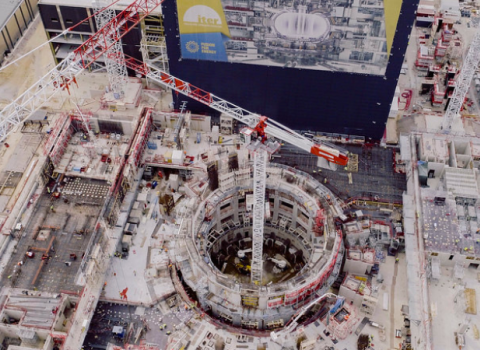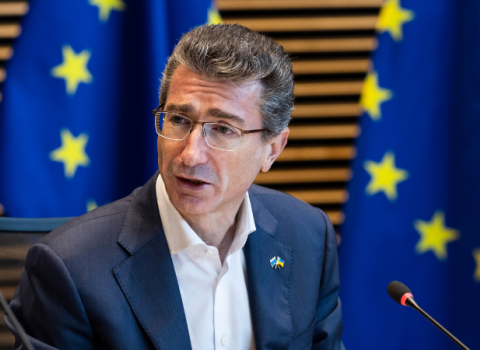A one billion Danish kroner grant aims to revolutionise how we build and rebuild the world around us. Aarhus University is spearheading two central initiatives in the project: Design of regenerative buildings and strategies to extend the lifespan of what we have already built.
With a one-billion-kroner grant (EUR 134 million) from the Villum Foundation, four Danish universities will jointly develop new knowledge, new materials, and new methods for a much more sustainable construction sector. The project has been named Civil Engineering and the Green Transition in the Built Environment (CEBE) and is the foundation’s largest single grant to date.
Globally, construction accounts for 37 percent of energy-related CO₂ emissions, 31 percent of the world’s material consumption, and 35 percent of all waste. Therefore, the sector must undergo a fundamental transformation if we are to reach climate goals and remain within planetary boundaries.
“This is not just a large grant, but a decisive shift in how we think about construction and infrastructure in the future. We must move away from short-term solutions and rethink how we design, maintain, and reuse our built environment,” says Eskild Holm Nielsen, Dean of the Faculty of Technical Sciences, Aarhus University.
CEBE will create new research and educational capacity, develop low-climate-impact technologies, and establish broad partnerships with industry. Aalborg University, the Technical University of Denmark, the University of Southern Denmark, and Aarhus University are all participating in the ten-year project.
The project is organized into seven major research fields, covering the entire lifecycle of the built environment—from design and materials to digitalization, adaptation, and lifespan extension. The fields are:
- Sustainability assessment
- Design for regeneration, circularity, and longevity
- Climate-friendly and robust building materials
- Digitalization and automation
- Climate-resilient and adaptable infrastructure
- Sufficiency, well-being, and energy efficiency
- Extending the lifespan of the built environment
Aarhus University is leading fields 2 and 7 and co-leading tracks 5 and 6.
Future Buildings Must Repair More Than They Burden
The research field Design for regeneration, circularity, and longevity focuses on how we can design buildings and urban areas that not only impose less burden, but actually contribute positively to their surroundings. This involves regenerative design, circular architecture, and components that can be reused endlessly.
“We must develop new and existing buildings with the ambition of achieving a regenerative impact on ecosystems. This requires us to think in terms of new materials, new design principles, and new ways of building, renovating, and transforming. Our goal is to create a design paradigm where the environmental impact of buildings becomes regenerative rather than destructive,” says Steffen Petersen, Professor at Aarhus University and head of the research field Design for regeneration, circularity, and longevity.
The field will, among other things, develop methods for designing buildings that can adapt to changing circumstances over time. Concepts and components will be created that can be modified for climate change or dismantled and reused in other contexts. It is also about using biogenic materials and developing solutions with both technical and aesthetic longevity.
“We need new approaches and new tools to achieve a building stock that does not overload ecosystems. It is not just about technology, but about creating a culture of regenerative buidling throughout the entire value chain,” he says.
Challenging New Construction as the Default Solution
The second research field based at Aarhus University focuses on developing methods to understand, assess, and extend the lifespan of existing buildings, bridges, and other structures. Instead of demolishing aging structures, researchers aim to create reliable tools and data to support condition assessment for safe and efficient renovation and reuse.
“New construction entails a high climate cost. We must move away from the reflex of replacing existing structures with new ones and instead use data to make informed decisions about the current condition of structures, and how much we can extend their lifespan,” says Professor Christos Georgakis, who leads the research field Extending the lifespan of the built environment.
It is also about being able to plan transformations: What does it take to convert an office into housing? How do we ensure that load-bearing structures can withstand new stresses? And how do we reinvent buildings so they gain new life with the least possible resource consumption?
“We must take lifecycle responsibility for what we build. This requires new knowledge within material aging, structural health monitoring, and smarter renovation strategies. Here, research must help push the boundaries of what we consider possible,” says Christos Georgakis.
Denmark already has ambitious climate goals and legislation that requires lifecycle assessments and CO₂ thresholds in construction. Therefore, the researchers behind CEBE see great potential for Denmark to become a test laboratory for future building methods.
The project aims not only to produce new knowledge but also to make a real difference in practice. There are high expectations that technologies, methods, and materials from CEBE will be implemented in real buildings and infrastructure projects during the program’s lifespan.
The vision of the project is that Denmark will not only keep up with developments but take the lead in an international transition.
Facts about CEBE
- Official start: January 1, 2026
- Budget: 1 billion DKK over ten years (2026–2035).
- Midterm evaluation: After 4–5 years, the initiative will be evaluated for continued support.
- Initial distribution: 600 million DKK will be allocated at first. Of this, Aarhus University receives 136 million.
- Partners: Aalborg University, Aarhus University, Technical University of Denmark, and University of Southern Denmark.
- Purpose: Capacity building in research and education to make Denmark a European leader in green construction.
- Includes: Research, joint educational initiatives, recruitment of international talent, industry collaboration, international networking, etc.
This article was first published on 7 October by Aarhus University.





 A unique international forum for public research organisations and companies to connect their external engagement with strategic interests around their R&D system.
A unique international forum for public research organisations and companies to connect their external engagement with strategic interests around their R&D system.